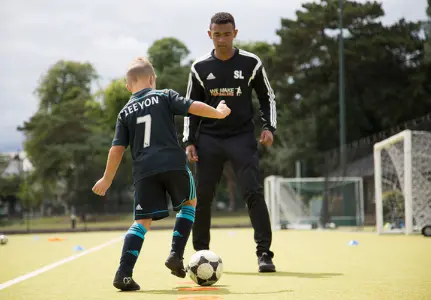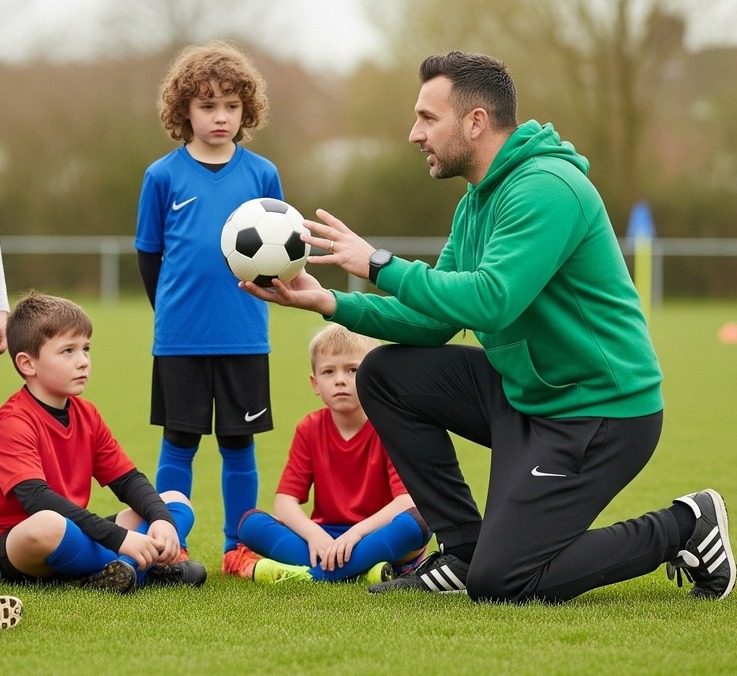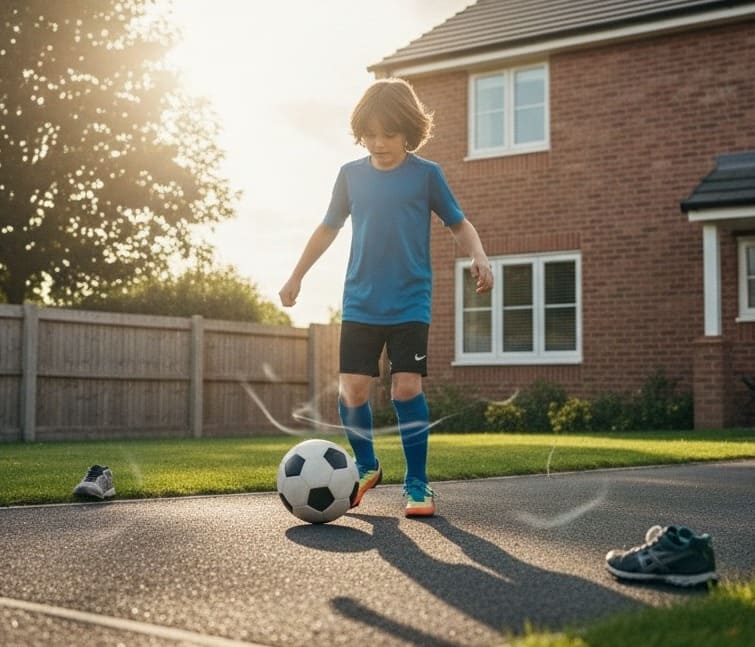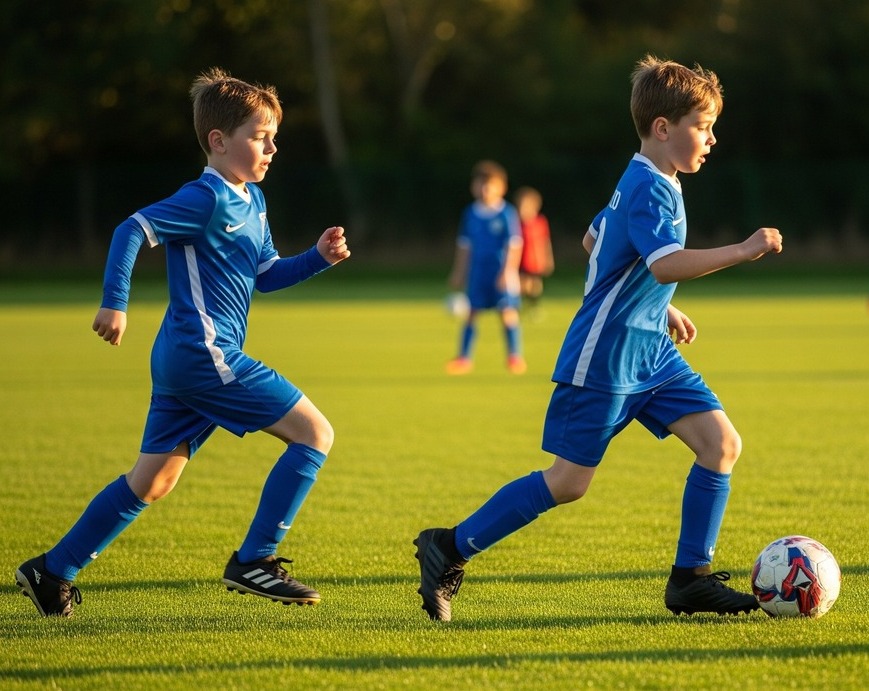Regardless of age or ability, becoming a better footballer is possible for every player.
HOW CAN YOU HELP YOUR OWN CHILD DO THIS, PLAY MORE, LOVE THE GAME AND BECOME THE BEST PLAYER THEY CAN BE?
There are many ways, ranging from helping them live a healthy lifestyle, involving them in different sport activities to improve fitness levels or social skills, exposing them to live football by taking them to a game, to giving them access to professional coaches and weekly approved training programmes. You can also train your child to become a better footballer in your own time, which can make it a fun activity and way for you to spend time together whilst bonding over football.
FIRST TOUCH OF THE BALL
One of the most important skills that a footballer can have is a good first touch - this is their first touch of the ball. Being able to bring the ball under control with both feet will ultimately make the game easier for your child, giving them more time in possession, increasing their worth to their team and helping them stand out individually as a player. The first touch of the ball is also relevant for matches or one-on-one situations as it directly impacts the game. Developing a great first touch is done through practice, practice and more practice. That can be by doing something as simple as kicking a ball against a wall with both feet and attempting to bring it under control when it bounces back or by you throwing the ball as high into the air as possible and getting your child to bring it down with their feet, their thighs or their chest. You can make this exercise fun and a little competitive by challenging each other on who can bring the ball down and under control with no bounces. Take it in turns to throw or kick the ball in the air, make it a game and have fun with it!
ENCOURAGE THE PLAYER TO USE THEIR WEAKER FOOT
It’s rare these days that you find an elite footballer who relies solely on one foot. Arjen Robben is a great example in our sport who uses both feet to play with ease. But, not many people can scale the technical heights of the Bayern Munich winger and that means that if you can help your child be comfortable playing with both feet, then their chances of becoming a great footballer will be increased. As they play and practice using both feet, they will gradually get more confident and in time will be more open to “getting on the ball” in varied match situations. Children and players of all abilities will naturally gravitate to the foot that feels most comfortable when they play but it is beneficial to become more confident on their weaker side. This is best done from a young age, however, it is never too late to learn new skills. Improving a player’s weaker foot can begin with something as simple as kicking a ball against a wall with their weaker foot before progressing onto passing drills, shooting and dribbling games. Eventually, you’ll want your child to be able to train and play using both feet – which will then give them the ability and confidence to trust in their weaker foot in a match situation.
DEVELOP THEIR TECHNICAL ABILITY AND BALL MANIPULATION IN TIGHT AREAS
Fantastic footballers are the ones who are able to get themselves out of tricky situations, which is done through excellent ball manipulation and skills. Your child might find themselves swarmed by one, two or three opponents or having received the ball in an area where they have very little time and space in which to work. These are challenging game situations that your player can develop in with the right practice. One area that you can help your child work on which will improve their chances of getting out of such tight spots is by dribbling with the ball virtually glued to their feet. You can help your child practice this by getting them to weave with the ball in and out of cones without touching them, gradually decreasing the amount of space between the cones so that the task gets harder. This is a classic but effective exercise which can be adapted and gamified based on the player’s age and ability. With less space to work in, they’ll be forced to develop better control over the ball as well as the ability to dribble out of the tightest of spots. This will also increase their self-confidence when they are dribbling with the ball, which is fundamental to their game as a player.
HAVE FUN AND WATCH A GAME OF FOOTBALL TOGETHER!
Watching football is a fantastic way to spend quality time together by sharing the sport you both love and helping your child learn and get inspired! Encourage your child to watch as much live football as possible. There is no such thing as a bad game to watch, as every game is a new learning opportunity in our sport. You could sit down and take in Match of the Day so they can marvel at the skills of some top players like Sergio Aguero, Paul Pogba and Virgil van Dijk and look to emulate what their heroes do week in, week out in the Premier League. It helps children to see the skills they learn in their training being replicated by their role models as this can be inspiring.
It isn’t just top-flight football they can learn from either – a trip to your local Football League or non-league club can help them to understand the dedication that comes into reaching a certain standard of football. It is also a great way to learn the impact football has in our communities and the sport can bring people together.
We hope that you have found this blog useful and that you continue enjoying football with your child and helping them develop as a player! Our focus is to create a positive relationship between the player and football to hopefully see them being involved in the sport for as long as possible. The great thing about the game is that there are always ways for players to develop, we help make park footballers, grassroots footballers and professional footballers. If you would like to continue helping your child be the best player they can book a free session with us to experience our training!




